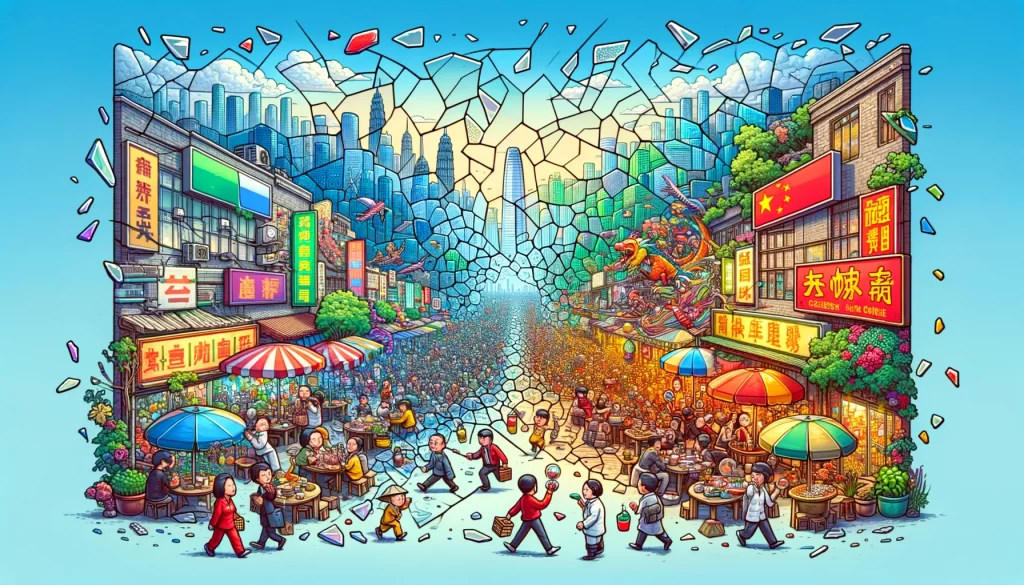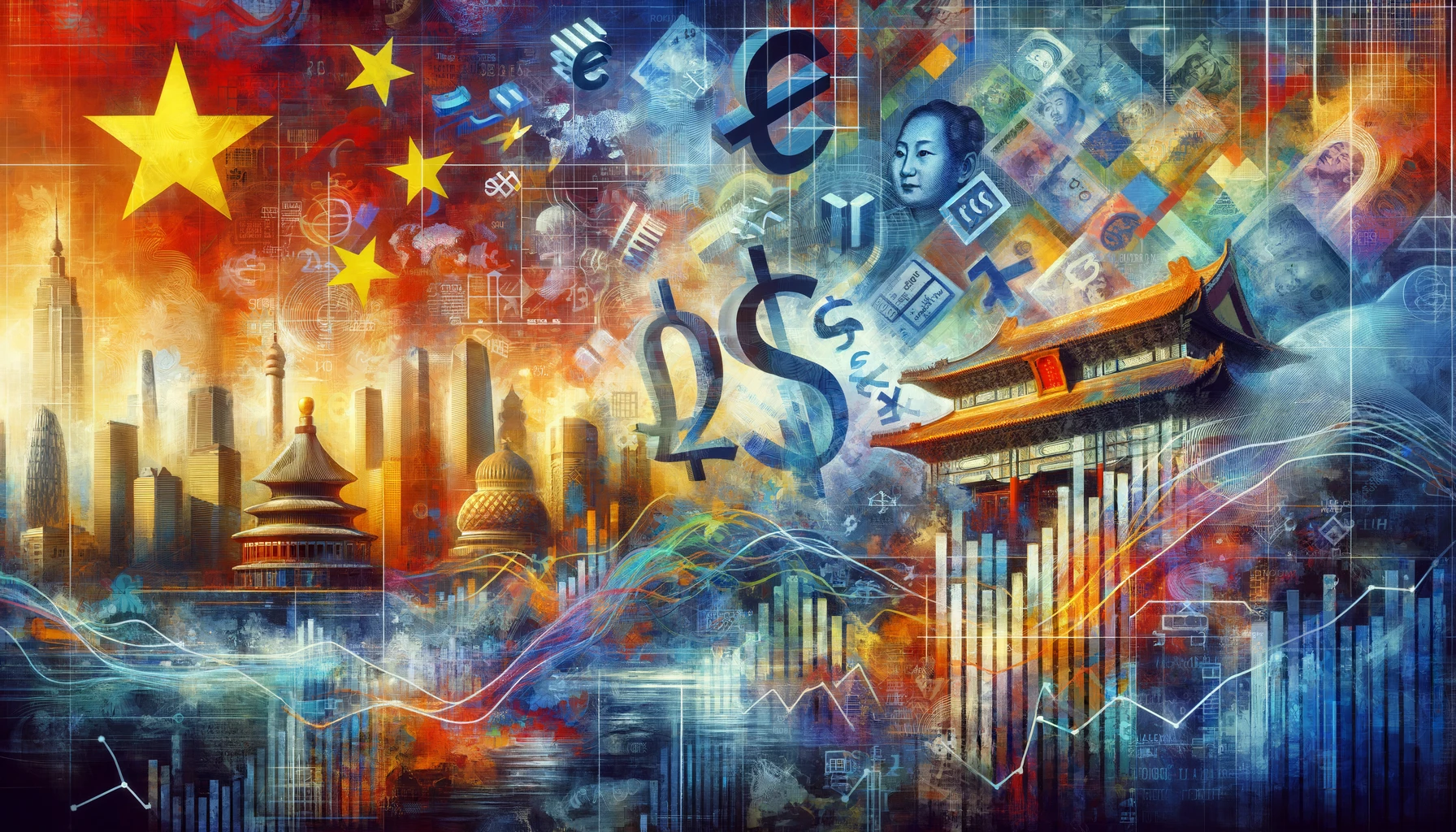In a world where economies are constantly shifting, China recently announced its latest strategy to boost its economy. This news is particularly relevant as China, known for its rapid economic growth over the past few decades, faces new challenges that threaten to slow its progress. Let’s dive into what’s happening and what it means for China and the rest of the world.
China’s Economic Journey: A Quick Recap
For many years, China experienced incredible economic growth, transforming itself into a global powerhouse. This success was built on a unique blend of government control and free-market practices, leading to significant improvements in living standards and the emergence of a middle class. However, the once-unstoppable growth has begun to slow, raising questions about the future of China’s economy.
The Recent Slowdown
At the annual National People’s Congress meeting, Premier Li Qiang announced a target of 5% economic growth for the next year. This goal is quite ambitious, especially considering the economic hurdles China is currently facing, including high levels of debt and a dip in consumer confidence. Experts and international bodies like the International Monetary Fund (IMF) are skeptical, projecting growth rates that fall short of this target.
The Heart of the Issue
China’s economy is at a crossroads. For a long time, it relied heavily on investment from the government and commercial sectors to drive growth. But this strategy has its limits. High levels of government and commercial debt, alongside a cooling real estate market and reduced consumer spending, pose significant risks not just for China but for the global economy as well.
China’s Plan for Economic Revival
In response to these challenges, China aims to shift its focus toward innovation, manufacturing, and technology. However, experts argue that the proposed measures might not be enough to significantly alter the country’s economic direction. The plan also includes efforts to stimulate consumer spending and attract more foreign investment, but details on how these goals will be achieved remain vague.
Understanding China’s Economic Challenges
China’s reliance on investment rather than consumer spending to fuel its economy has created an imbalance. Following the 2008 financial crisis, there was a massive push towards infrastructure and real estate development, leading to issues like overdevelopment and unoccupied “ghost cities.” This strategy has resulted in a debt level that alarms economists, drawing comparisons to Japan’s “lost decade.”

The Path Forward
For China to achieve sustainable growth, many economists believe it must undertake significant structural reforms. This includes addressing local government debt, providing more support to private firms, and improving the social safety net to boost consumer confidence and spending. However, such sweeping changes seem unlikely in the current political climate.
Geopolitical Tensions and Economic Strategy
China’s economic strategies are also intertwined with its global ambitions and rivalry with the West. Efforts to enhance its manufacturing and technology sectors are seen as direct challenges to Western dominance, potentially leading to further economic and political tensions.
Looking Ahead
As China attempts to navigate its economic challenges, the world is watching closely. The outcome will not only determine the future of China’s economy but also have significant implications for global economic stability and geopolitical relations.
While China has laid out plans to invigorate its economy, the road ahead is fraught with challenges. Achieving the ambitious growth target of 5% will require more than just shifting focus; it may necessitate a fundamental rethinking of China’s economic model and its role on the global stage.
This article is based on the following article:
https://www.vox.com/world-politics/24091759/china-economic-growth-plan-xi-jinping-crisis

Background Information
Understanding these concepts will help the reader appreciate the complexities of China’s economic challenges and the potential impact of the strategies it employs to address them. This foundational knowledge not only makes it easier to follow the developments in China but also enhances overall economic literacy.
1. Gross Domestic Product (GDP)
– Definition: GDP is the total monetary or market value of all the finished goods and services produced within a country’s borders in a specific time period. It serves as a broad measure of a nation’s overall economic activity.
– Importance: GDP growth rate is a critical indicator of economic health. A positive growth rate indicates a thriving economy, while a negative growth rate may signal economic troubles.
2. Consumer Confidence
– Definition: Consumer confidence is a measure of how optimistic or pessimistic people are about the economy’s prospects and their financial situation. It influences their spending and saving behaviors.
– Impact on Economy: High consumer confidence typically leads to increased spending, contributing to economic growth, whereas low consumer confidence can result in reduced spending, harming the economy.
3. Economic Stagnation
– Definition: Economic stagnation occurs when an economy experiences little to no growth over an extended period. It is characterized by stagnant GDP, unemployment, and low consumer spending.
– Consequences: Stagnation can lead to increased unemployment, lower income levels, and diminished living standards.
4. Debt Crisis
– Definition: A debt crisis happens when a country or entity cannot meet its debt obligations, possibly leading to default. It often results from excessive borrowing and mismanagement of fiscal policy.
– Effects: A debt crisis can lead to economic instability, loss of investor confidence, and potential impacts on the global economy, especially if the country is a significant global player like China.
5. Economic Reforms
– Definition: Economic reforms refer to policy changes aimed at improving a country’s economic efficiency, growth, and distribution of income. These can include changes in laws, regulations, and practices affecting the economy.
– Purpose: Reforms are often implemented to stimulate economic growth, address imbalances, and adapt to changing economic conditions.
6. Global Economic Interdependence
– Context: In today’s globalized world, economies are interconnected through trade, investment, and financial markets. Changes in one significant economy can have ripple effects worldwide.
– Example: China is a major player in global trade and investment. Economic challenges in China can impact global supply chains, trade balances, and financial markets.
7. Innovation and Technology in Economic Growth
– Role: Innovation and technological advancements play a critical role in driving economic growth by improving efficiency, creating new industries, and enhancing competitiveness.
– Challenge for China: Transitioning to an innovation-driven economy involves challenges such as investing in research and development, nurturing talent, and creating a conducive environment for innovation.
8. Geopolitical Tensions
– Definition: Geopolitical tensions refer to conflicts or disputes between countries based on territorial, economic, or political issues.
– Relevance to China: Tensions between China and Western countries, particularly the US, over trade policies, technology, and security issues can influence economic policies and strategies.
Please subscribe to Insight Fortnight, our biweekly newsletter!
